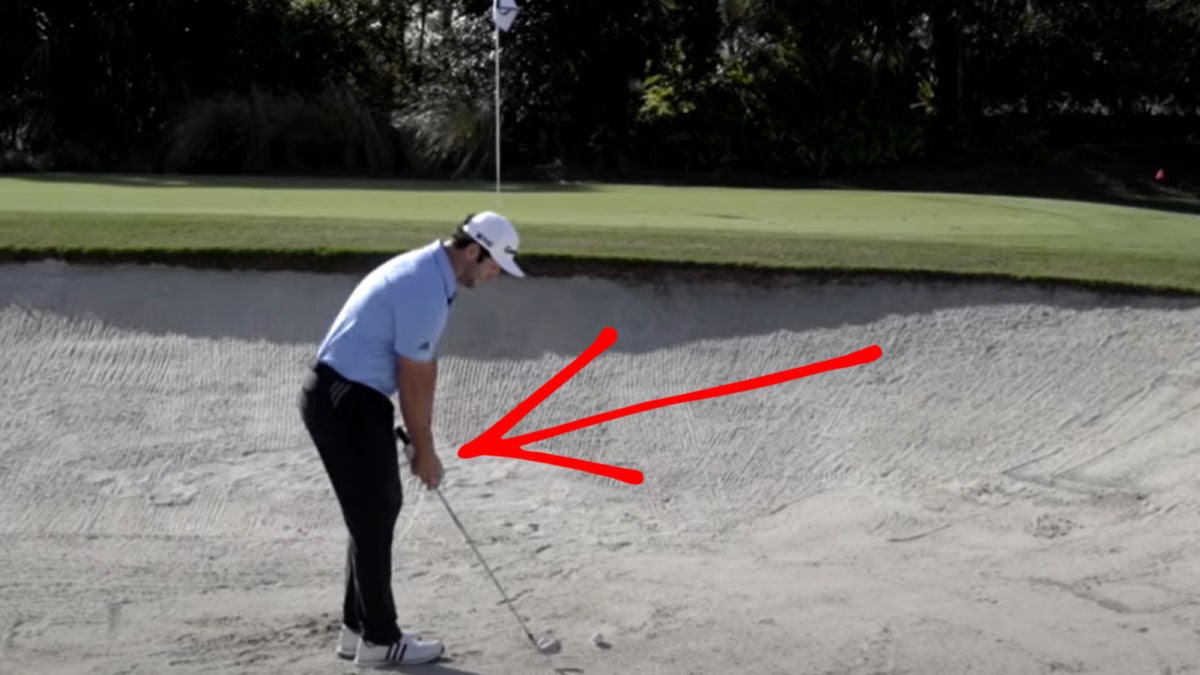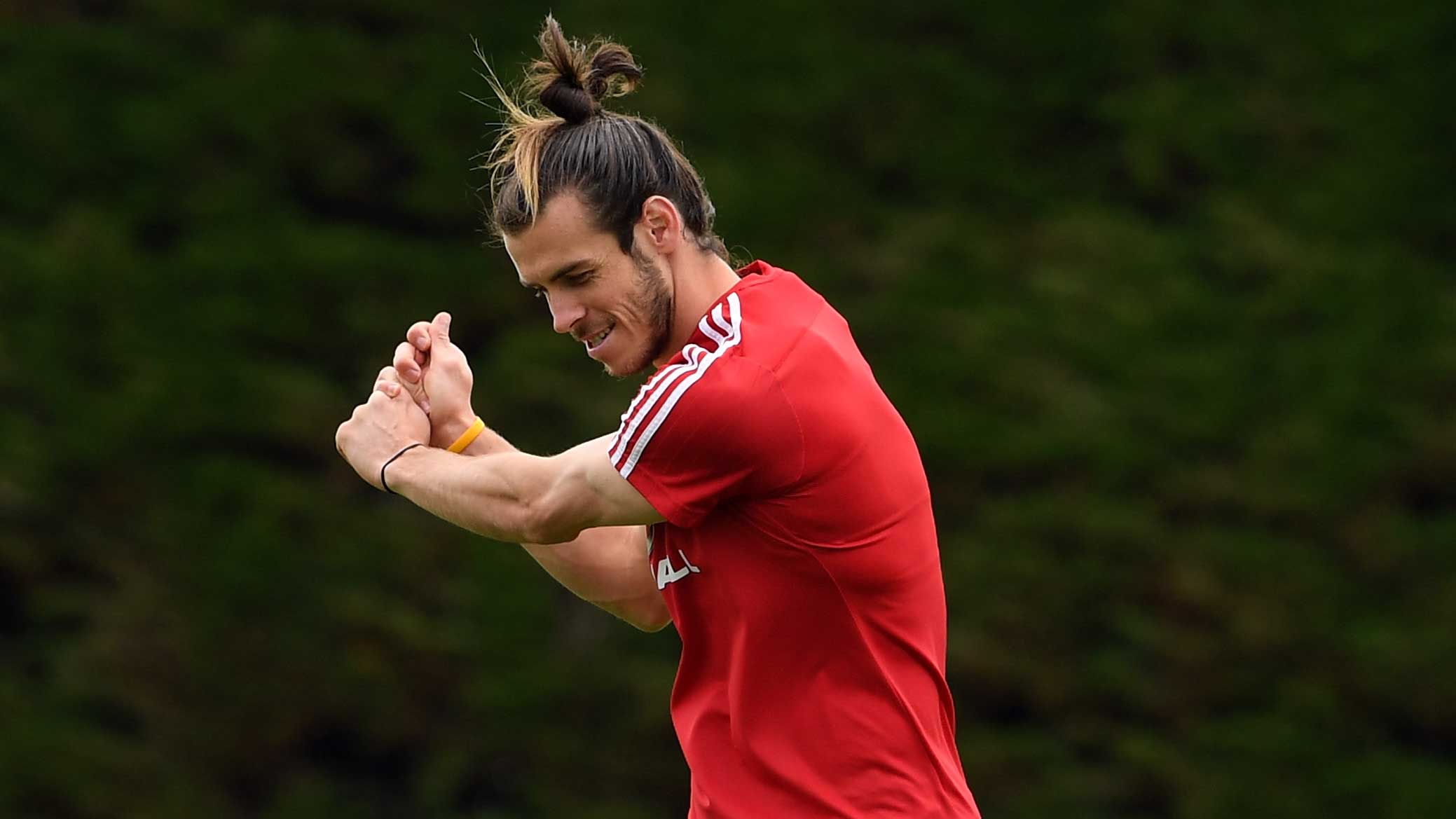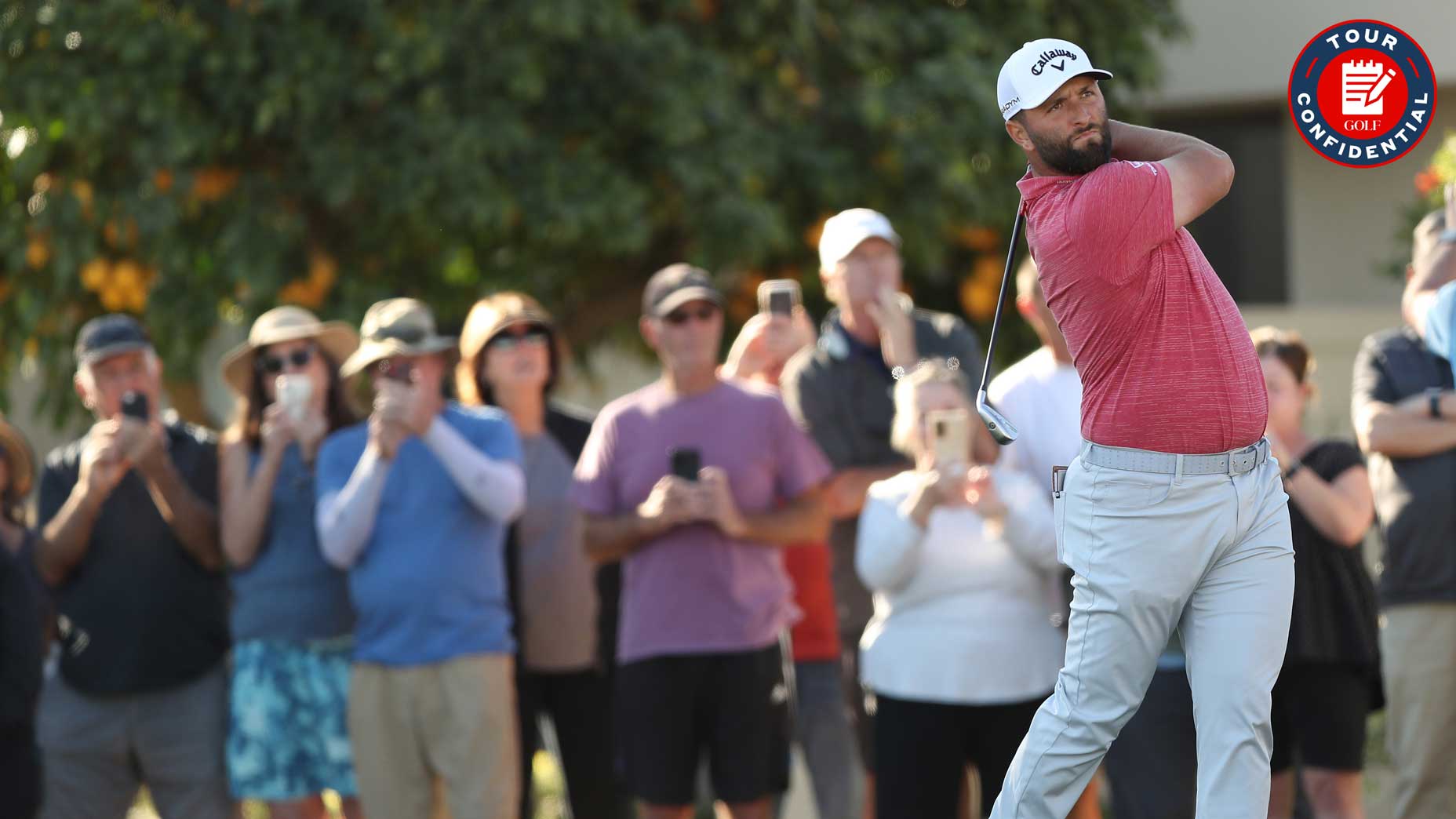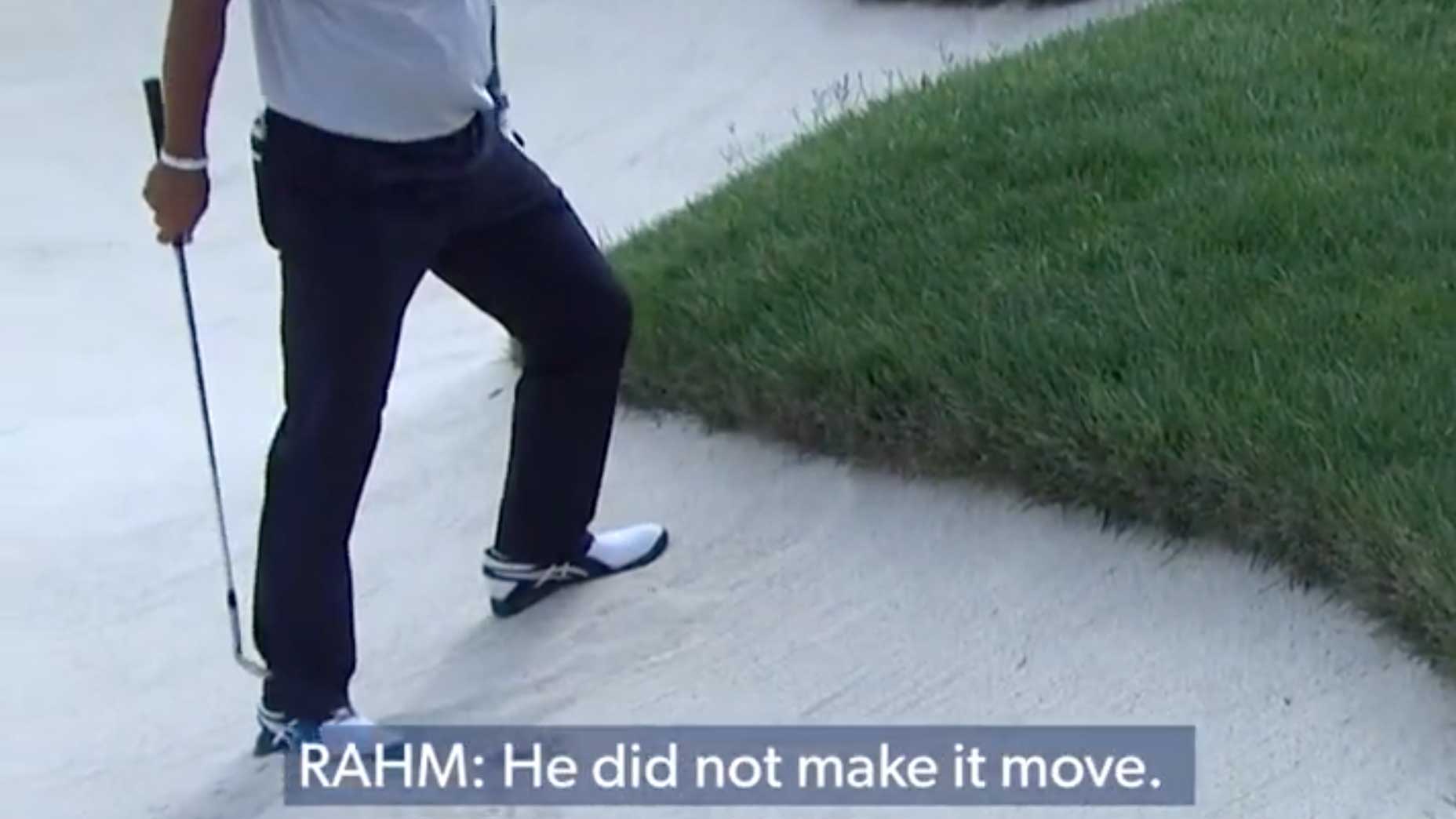Hang around enough pro golfers, and you’ll notice that, even though they’re some of the most supremely talented athletes on the planet, they love simple solutions. It often seems like they look for them – and enjoy them – more than recreational golfers. It’s the flashy shots that often make the TV coverage, but it’s the unspectacular that are often the most reliable from round to round.
This shot from Jon Rahm is perhaps the epitome of a simple solution. Golfers who struggle out of the sand should take note.
In the video, which you can watch in full at the bottom of the article, Rahm says there are two ways golfers can play bunker shots. The second is the conventional way (open the face, drop the hands, hold the face open), but Rahm speaks of that as a backup plan. His preferred method from the bunker is to treat it like a putt. Yes, you read that correctly.
First, Rahm takes a low-lofted iron, like a 4-iron, chokes down on it and stands a little closer to the ball, so the shaft is more upright.
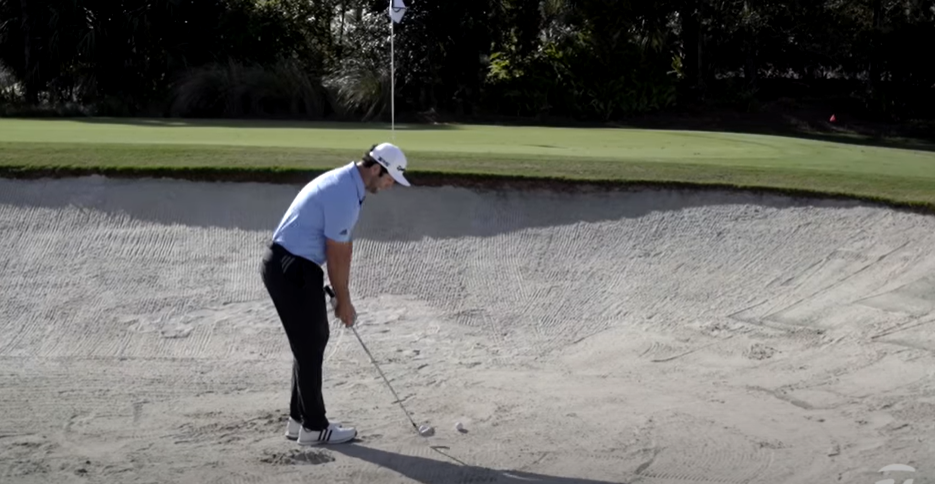
Once he’s set up, his goal is simple: swing the club the same way you’d hit a long putt: a little wrist action, but a stroke mostly powered by big muscles.
“Hit it like a putter,” he says. “Just roll it out if you can.”

As you come into the ball, it’s OK to let the toe dig into the sand and strike the ball on a descending blow. The ball should skip out low and hot through the bunker, then begin rolling on the green.

The most important thing to know, before you go and try this shot yourself, is when to hit this shot. Anytime there’s a high lip on the bunker, the green is elevated significantly, or there’s a large amount of rough between the bunker and the hole, you should opt for the conventional option. Any other time, Rahm suggests his putt-bunker shot.
Watch the full video below:
